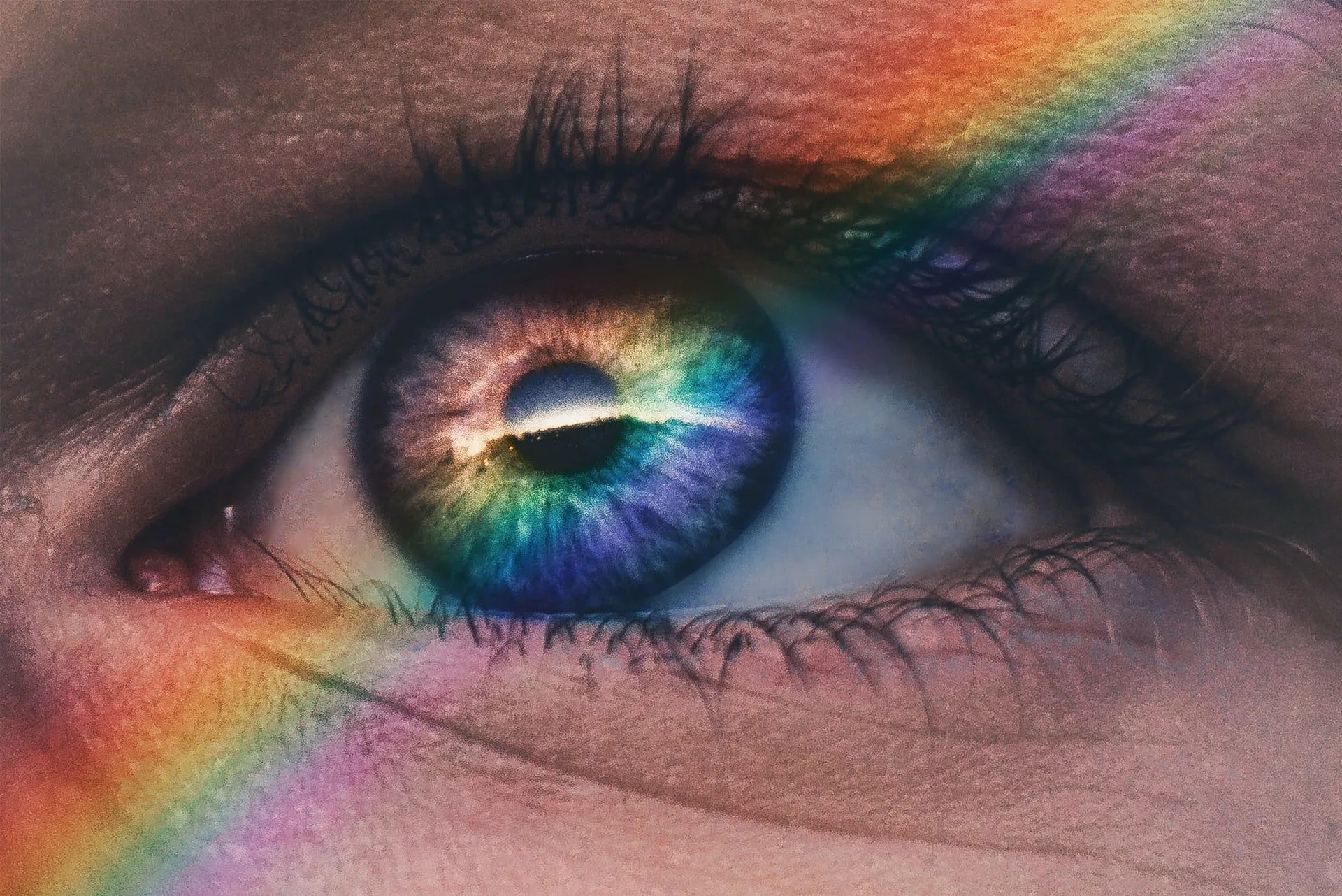Question: What is not only nine times safer than wearing contact lenses, but also more cost-effective in the long run than wearing varifocals?
Answer: Laser vision correction, an eye care solution that is becoming increasingly popular – and for good reason. The technology offers freedom from spectacles and contact lenses; it’s very safe, and it’s reputable.
In a recent multicenter clinical trial, the results of which were published in Ophthalmology Times, more than 90% of subjects, when measured binocularly, had uncorrected visual acuity of 20/16 or better.
Consultant ophthalmic surgeon Dr. Dylan Joseph was involved in the first clinical trials for the Streamlight laser vision correction procedure. The findings were presented at the European Society of Cataract and Refractive Surgeons in 2018.
Joseph says laser vision correction is arguably the most rapidly expanding sub-specialty in ophthalmology. “We’ve come a long way since the first laser treatment was done 30 years ago,” he explains.
“Everything has become refined, pushing towards better outcomes, lowering risk and complication rates as much as possible. Laser vision correction is, in fact, the most published, researched, and peer-reviewed surgical discipline across the board.”
Enhanced Technology For The Win
The diagnostic equipment used in ophthalmology today is so advanced that it can visualize the cells on the surface of the eye to an accuracy of one-thousandth of a millimeter. The technology can treat short-sightedness, far-sightedness, and astigmatism, or a combination of problems, potentially leaving patients free from spectacles, contact lenses, and reading glasses.
However, many people are unaware of their choices. People usually search for glasses or contact lenses online and are not aware that there are other possible options. Understanding and trusting the technology, and your chosen laser vision correction specialist, go a long way towards helping you make that decision to own your vision.
Transforming eyesight through LASIK

LASIK is an acronym for Laser in situ Keratomileusis. The technology is described as the art of combining science and the most sophisticated laser tracking systems to essentially “sculpt” the cornea, or clear covering on the front of your eye
The process is completely painless. The laser system is cool, which means it doesn’t burn tissue. Its advanced mechanisms track your eye in various dimensions. Each pulse is delivered accurately, at a rate of 500 pulses per second.
“LASIK surgery is all about a pattern, a metronome from start to finish, including how you work a patient up for surgery,” says Joseph. “How you input your data into the nomograms, which will tell you how to program the laser for the individual. Here it is imperative to understand your system and optimize your outcomes.”
How Long Does The Procedure Take And How Long Will The Results Last?
LASIK takes about 20 minutes for both eyes. “Before the surgery, we will give you a calming tablet and talk you through the procedure, from start to finish. During the procedure, we will talk to you to ensure you know exactly what is happening,” Joseph explains.
Usually, if you’ve had LASIK, you can see a great visual improvement the next day. By four to six days, most people are seeing the same as, if not better than, they did with their contact lenses or glasses.
“Surface treatments or PRK (photorefractive keratectomy) take longer to heal visually. We do this treatment in cases where we cannot create a flap.”
Does Refractive Surgery Technology Differ And Does This Impact On The End Result?
Not only does the ability to track and deliver sequential pulses make the treatment more accurate, but laser-beam technology and pattern delivery have changed so much over the years.

Joseph explains that older laser systems were blamed for glare and halos, especially at night. “This is all but a thing of the past, with the expansion of the treatment area that we laser. Also, the ability of the laser to simulate a more natural corneal profile during the laser decreases glare and halos.
The refractive suite is so smart, it contours your cornea according to what it was like before the laser. It’s all programmed with thousands of data points it takes into account.”
Freedom From Contact Lenses And Spectacles
If the laser isn’t an option, there are other avenues of vision correction to explore, including an implantable “contact lens”. A further alternative is what is called a refractive lens exchange –replacing the human lens with technology that gives you the ability to read, see the computer, and see in the distance.
In essence, anyone wearing spectacles, contact lenses, or reading spectacles, and wanting to explore independence from or reduce their dependence on them, can consider this, Joseph says.
How Does Laser Vision Correction Surgery Work?
The first laser system uses plasma, essentially air bubbles, to create an ultra-thin flap in your cornea. According to Joseph, this is so accurate that it can be set to a depth of 100 microns, 0,1mm. The flap is so accurately constructed that, after surgery, it sits very neatly back in its place. The laser that creates this flap is called a femtosecond laser, the first of the lasers in the refractive suite.
The second laser, which delivers pulses to reshape your cornea, is called an excimer laser, which stands for the excited dimer. It delivers pulses in a flying spot pattern at 500Hz or 500 pulses per second. This is all preprogrammed by the surgeon according to the vision that has been tested, as well as scans of the contour of the patient’s eye, to get an optimized, smooth surface after surgery.
“This is what we refer to as customized vision correction. The suite offers a variety of customizable options.”

Who Can’t Have This Procedure?
Looking at big data, in about 92%-95% of people seeking visual solutions, there are options available.
Some people may have systemic problems or other issues with their eyes which refractive surgery can’t correct. This will be picked up during consultation and initial examination and discussed in detail.
Potential Complications
“When we evaluate a person, we run through the entire list of potential complications and risks, which can differ from person to person, according to their history and script they wear,” Joseph says.
Dry Eyes
According to Joseph, this is a misnomer with the current laser platforms. The term used today is transient ocular discomfort. It’s always transient as a result of lasers but can persist for up to nine months. This is treatable, but because of the ability of modern femtosecond lasers to create ultra-thin flaps, this risk is very low.
It’s also imperative, as part of the preoperative screening process, that dry eyes be picked up on, he adds. They need to be treated before laser vision correction, or any vision correction procedure, for that matter.

Most people with existing dry eyes have meibomian gland dysfunction, or dysfunction of the oil glands, critical in coating the tear film, preventing it from evaporation and subsequent inflammation.
The biggest causes of this meibomian gland dysfunction are five to eight hours per day in front of a computer, and contact-lens wear.
“It doesn’t mean patients with pre-existing dry eyes can’t have laser surgery. The dry eye just needs to be treated and optimized prior to laser.”
Glare, Halos, And Double Vision
Glare and halos are very rare nowadays, because of modern laser profiling. Double vision is even rarer, and, in most cases, can be rectified.
Regression and Natural Aging
This is all discussed with the patient before surgery, Joseph says. “Due to optimizing nomograms, and controlling surgical technique and time of surgery, the potential for over and under-correction is as low as we can get it.
“These terms, however, don’t equate to regression, which means that you may need a touch-up laser in the future. The higher your script, the greater the chance of needing enhancement or touch-up. And yes, this can be done.
“If your vision does change again, be it two or 10 years down the line, there is usually something we can do to get it back to where you want it. Needing a touch-up doesn’t mean the laser has failed, which is another common misconception. There are many reasons for regression, including natural aging of the eye, and remodeling of the surface of the eye as part of the recovery process.”

Astigmatism
It’s commonly believed that astigmatism can’t be lasered, but most modern lasers can laser up to 6 diopters of astigmatism. Astigmatism after surgery is incredibly rare, because of the ability of the lasers to track and control the rotational movement of your eye while lasering.
Flap Problems
Flap complications are rare, too, Joseph says. “The beauty of creating a flap with air is that, if in a very rare event, there is something we are not happy with, we send you home and bring you back after three months. It’s just air – no blades.
It dissolves and has zero impact on your vision. So here, with femtosecond laser technology, the dictum “prevention is better than cure holds true.”
Loss of Vision
Laser surgeons are now able to track their outcomes and constantly optimize them. “We always look critically at cases where there are lines of visual loss. Most of this is due to transient ocular discomfort, which does heal over time.
Very rarely will one see a permanent loss of best-corrected vision? In most of these cases, depending on the cause, vision can again be lasered, and vision restored,” Joseph adds.
What Other Advancements Would Help People To Enhance Their Eyesight?
“There is an amazing technology that can treat scripts of up to -20, which is outside the FDA guidelines for laser vision correction,” Joseph notes. “Here we are able to implant a ‘contact lens’ over your human lens inside your eye – this is done asleep, and the results are usually immediate.
“The same technology can be used in people who have a high plus script. For those who can’t have laser vision correction or ‘implantable contact lens’ correction, we can consider a refractive lens exchange.
“What is truly exciting is that there is technology in the pipeline that changes your iris color – this is a laser – and preliminary studies are showing very promising results,” he concludes.



![women [longevity live]](https://longevitylive.com/wp-content/uploads/2020/01/photo-of-women-walking-down-the-street-1116984-100x100.jpg)










